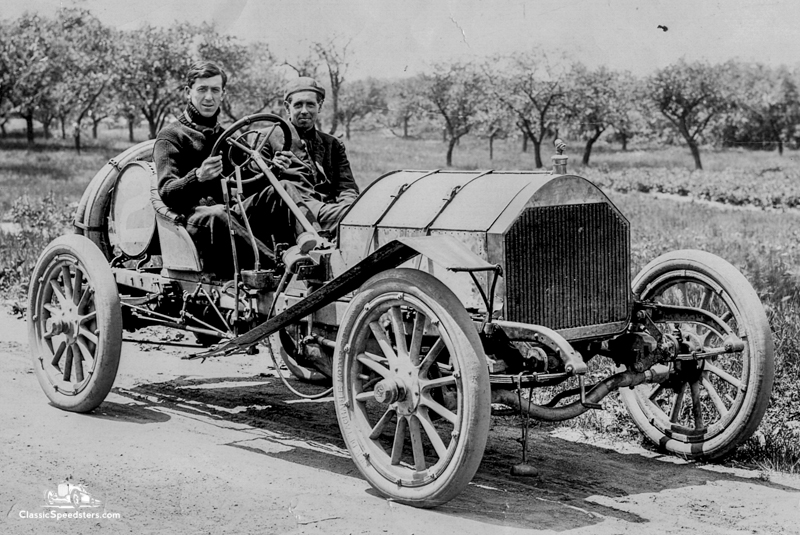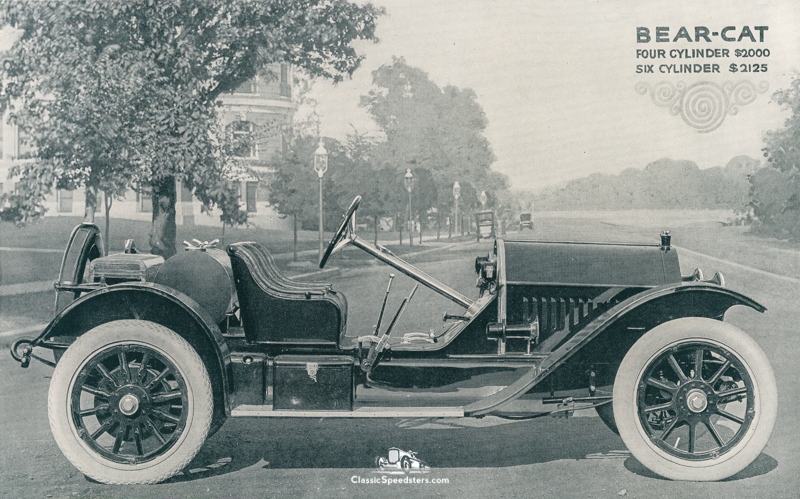The cutdown speedster was a slang term of the early 1900s that aptly described what tinkerers and shade-tree mechanics were doing to their dad’s cast-off Model T. To remove the body, it was a simple task of unbolting the fenders and body unit, all of which came off with alacrity. This, of course, applied to whatever car was lying around, waiting to be “improved,” but the T was often the most available, and hence, the most likely donor.
1914 “cutdown” speedster courtesy Antique Automobile
Upon body and fender removal what was left was an open platform, a blank slate of sorts, which of course required some seats, a fuel tank, but not really much else. The role models for these cutdowns were the race cars vying for first at the local and national race tracks such as the 1908 Knox, driven by Billy Bourque, seen below.
Final details creating those early cutdowns probably involved conversations including comments like the following. Instrument cowl? Okay. Windshield? Naah… Bumpers? Are you kidding? Adventure? You betcha!
1908 Knox Model R courtesy John Hess collection.
Not every cutdown-styled speedster came from a cast-off Model T, Chevrolet, or other ex-family car out behind the barn. Some were actually mildly stripped versions of other, less popular makes. Other examples were simply ex-factory emulations of existing track cars, but outfitted to be street speedsters.
1912 Kissel Model 30 Semi-Racer courtesy Wisconsin Automotive Museum
The Kissel catalog for 1912 extolled the virtues of its Model Thirty Semi-Racer:
In runabout and business service no other type of body
quite equals the adaptability and economy of the
KisselKar semi-racer runabout.
And if the Model Thirty didn’t get it for you, there were also the Forty or the Six-Sixty models. They looked to be the same, but each model was successively bigger. I mean, if you want to go, why not go BIG?
A third group that fit the open-platform, cutdown style of early speedster were the dual-purpose speedsters sold by Stutz and Mercer. These models were stripper cars when compared to their company’s siblings. They were built to drive to the track, win, place, or show, collect the trophy, and drive home in time for Sunday dinner. It was a simple removal of lights, horn, and fenders, and =voila!= … track hero!
1914 Stutz Bearcat a.k.a “Bear-Cat” courtesy AACA Library
Although the popularity of cutdown speedsters was strong, their tenure on the open roads was short, as more enclosed, sporty bodies took over by the mid-teens. However, their open-air popularity continues to this day. Several online forums and organizations celebrate and actively support the cutdown speedster. One such club, the Northwest Vintage Speedsters of Portland, Oregon, regularly gets together for road excursions. Members fire up their speedsters and go have some adventure on the open roads. Which is what we all should be doing, BTW…
You can view their website and member photos at
https://www.nwvs.org/
Quite a bunch of enthusiasts – go check them out!
Next post: The Sport-Bodied Speedster





